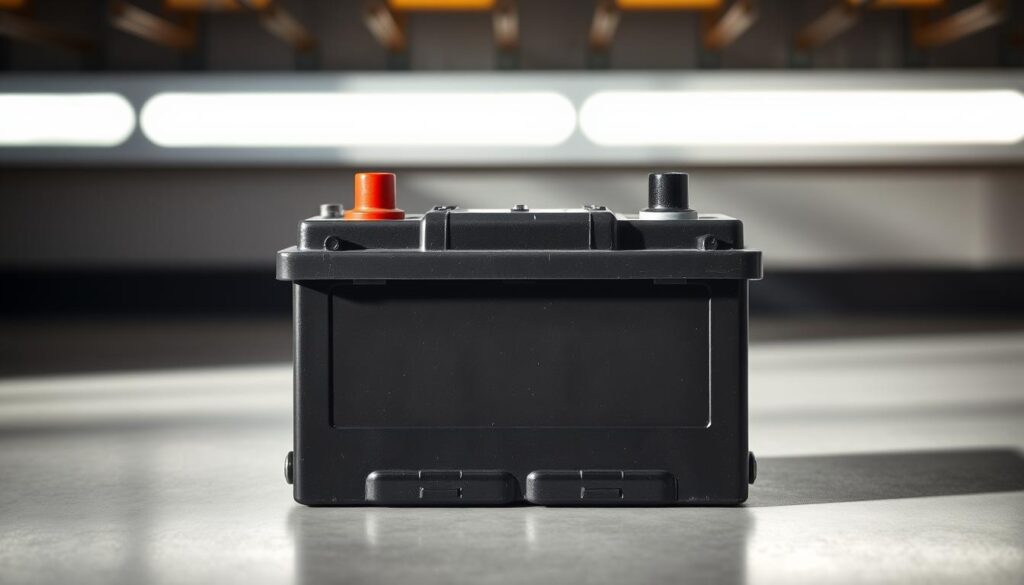Is your car showing a warning or a charging message on the dash? This service page explains what that alert means and how our shop diagnoses the issue. We focus on the 12v system that powers cranking, lights, and control modules so you know what to expect.
Common problems range from a weak battery to a worn alternator or blown fuses. Intermittent lights or a draining battery may point to wiring faults or failing control modules. Our process prioritizes same-day testing to find the root cause without needless parts swapping.
We work with local dealer or dealership resources when reprogramming or software updates are needed. You’ll get a clear estimate and a plan that limits repeat visits and restores stable voltage so your vehicle won’t leave you stranded within miles of home.
Key Takeaways
- 12v health, alternator output, and battery condition must all be checked to diagnose the problem.
- Common failures include weak batteries, worn alternators, blown fuses, and damaged wiring.
- Same-day tests and targeted repairs prevent unnecessary part swaps and repeat trips.
- Warning lights and cluster messages help guide efficient diagnostics.
- We coordinate with dealers for module programming when required to finish repairs correctly.
Understanding Your Volvo’s 12V Charging System
The 12v network balances storage, generation, and distribution so a car’s electrical systems work reliably. Knowing each part’s role helps you spot real faults quickly.
Battery, alternator, and regulator roles
The battery stores energy to crank the engine and to power electronics when the engine is off. The alternator replenishes that charge while driving and runs accessories.
The voltage regulator keeps system voltage steady. Without it, overvoltage can damage a battery or undercharge it and cause hard starts.
Wiring, fuses, and relays that keep voltage stable
Clean battery posts and a solid ground connection are vital. Corrosion, a loose connection, or damaged wiring often causes intermittent failures that mimic bigger problems.
Fuses and relays protect circuits; repeated blown fuses point to a short or overloaded branch that needs repair, not just replacement.
Control modules and sensors that influence charging
Modules like the ECM monitor load, temperature, and state of charge to command smart charging. A sensor or module fault can trigger warnings even when the alternator reads normal.
“Accurate diagnosis separates a simple battery swap from a deeper control or wiring issue.”
- Quick tip: A charger reading at rest is useful, but verify alternator output under load for a full picture.
Common Warning Signs and Messages of a Charging Problem
Many drivers first notice an issue when a red icon or a text message appears on the instrument cluster.

Dashboard alerts: what the messages mean
A red battery icon or a charging fault message usually tells you the system is seeing low alternator output or unstable voltage. If voltage keeps falling, the dash may escalate to a stop safely advisory.
Always capture stored error codes before clearing them. Those codes are valuable breadcrumbs that point to the alternator, regulator, wiring, or a module.
Real-world symptoms to watch for
Dimming headlights at idle, slow engine cranking after the car sits, and infotainment resets are common signs. Hard starts and repeated clicking often track back to a weak battery, but an underperforming alternator can mimic the same behavior for minutes before recovering.
- Reduced miles when the car is parked may indicate parasitic drain or module wake events.
- Intermittent warnings that clear on restart suggest a vibration- or temperature-sensitive connection or relay.
- Poor grounds or blown fuses can produce dimming lights while driving, so measure output rather than guessing.
“Prompt diagnosis with a scanner and load testing separates a quick battery swap from deeper wiring or module repair.”
Volvo Charging Malfunction: Causes and Solutions
A dead 12v battery often starts as a small symptom—slow crank or dim lights—before leaving you stranded.
Dead or weak 12V battery: age, parasitic draw, time parked
Symptoms: difficulty starting, dim lamps, frequent jump-starts. Age, leaving lights on, or a failing alternator will sap capacity.
Fix: perform a proper load test, replace the battery when it fails, and verify alternator output and posts are clean.
Faulty alternator or voltage regulator: low voltage under load
Low output under load causes dash warnings, dimming while driving, and repeat discharges.
We test output and ripple; failing units are replaced and the regulator checked for proper command response.
Blown fuses, bad relays, or poor connections
Specific components stop working or fuses blow repeatedly. Replace the fuse or relay only after finding the overload.
Wiring damage or short circuits leading to recurring faults
Chafed harnesses and corroded grounds cause intermittent error and repeated failures. Inspect high-current leads and repair insulation.
- Load test battery, then replace if weak.
- Output and ripple checks for alternator; replace if out of spec.
- Trace shorts, fix wiring, and only then swap fuses or relays.
- Coordinate dealer programming if modules need coding after parts are changed.

How We Diagnose: From Quick Checks to Advanced Testing
We follow a clear, staged process so your car spends less time in the shop and more time on the road.
First, we hook up a professional battery charger and confirm state of charge. Then we run a load test to check reserve capacity before measuring charging voltage with the engine running.
Battery and charging voltage test with a professional battery charger
We test the battery under load, inspect the posts, and verify the battery can hold a charge for expected times. A weak battery is replaced only after confirmation.
Alternator output, ripple, and voltage regulator evaluation
An alternator evaluation includes a duty-cycle sweep and current checks at idle and 2,000 RPM. We use a scope for ripple analysis to find failing diodes in just a few minutes.
If the alternator cannot track commanded setpoints, we test the voltage regulator and confirm whether repair or replacement is needed.
Fuse/relay inspection and connection integrity under vibration
Fuse and relay work includes current mapping and wiggle tests to expose weak connections that fail only under vibration. This prevents misdiagnosing a healthy alternator.
Module and sensor scan for stored error codes and message history
We scan control modules for error codes and capture freeze-frame data. That helps correlate intermittent issues with temperature, RPM, and load before clearing any messages.
- Final check: re-test the system with the charger disconnected to confirm stable idle voltage with accessories on.
- Documentation: we log test times, prior posts, and recommended repairs so you get a clear plan and price in hours, not guesses.
Service Options, Turnaround Time, and When to Call a Tow Truck
Knowing when to tow your car protects systems and saves time. Call a tow truck if the dash shows a persistent battery light, lights dim while driving, steering or brakes feel heavy, or the engine stumbles.
Same-day testing and dealer-level diagnostics
Most shops offer same-day service for initial tests and common repairs. Typical diagnostics take 30–60 minutes; many battery or alternator swaps finish in under two hours when parts are in stock.
- Dealer-level programming is available through our shop and partner dealership resources to finish module coding without extra trips.
- Complex wiring or parts on order may extend turnaround to the next day or into the week.
| Service | Diagnostic minutes | Typical repair hours |
|---|---|---|
| Battery test & replace | 30–45 | <2 hours |
| Alternator evaluation & swap | 40–60 | 1–3 hours |
| Wiring or module repair | 60–120 | Next day–week |
“If a message last shown: charging and accessories start to flicker, towing avoids a roadside stall.”
We coordinate tow times and stage parts so your car moves from inspection to repair quickly, cutting total hours without your vehicle.
Conclusion
Routine checks and prompt action keep small electrical warnings from becoming costly failures. Test the battery and 12v battery health seasonally, clean posts, and scan for any stored message at the first warning light.
If you own a mild hybrid or a volvo xc60, use a compatible battery charger during long storage to avoid a parked car error. When a dealer said programming is needed after parts are replaced, complete that step to keep the engine and energy management synced.
If a charging fault persists, schedule service rather than wait a week. Low voltage can damage modules fast. When unsure, choose a tow truck — a short tow often saves hours and extra truck repairs.
We close each job with road tests, clear timelines, and a written plan so your car leaves with stable starts and no recurring message on the dash.
FAQ
What does the dashboard message “charging fault, stop safely” mean?
This message indicates a problem with the 12V electrical system—commonly the battery, alternator, or related wiring. It tells you to park safely and turn the vehicle off. Avoid long drives until a technician checks voltage and connections to prevent a no-start or accessory failure.
My car showed a warning light then started fine the next day. Is it safe to keep driving?
Intermittent warnings can signal a failing alternator, loose connection, or a weak 12V cell that sometimes recovers. Drive with caution and schedule a diagnostic soon. Repeated or worsening symptoms—dim lights, slow cranking, or electrical errors—require immediate service or towing.
How long does a typical charging system diagnosis take at a shop or dealer?
Basic battery and voltage checks often finish the same day, usually within an hour. Advanced testing—alternator output, ripple, wiring harness inspection, and module scans—can take several hours. Dealer-level diagnostics that include software checks may need a full day or more depending on appointments.
Can a bad 12V battery cause warning messages even if the engine runs normally?
Yes. A weak or aging 12V battery can trigger fault messages and odd electrical behavior while the engine and hybrid systems appear to operate. Parasitic drains, long parking times, and cold weather accelerate failure. Replace the battery if tests show low capacity or high internal resistance.
What are common alternator failure signs besides low battery voltage?
Listen for unusual noises, check for flickering interior or headlamps, and watch for slow accessory operation. Alternator ripple or a faulty voltage regulator can create spikes or drops that trip control modules and cause stored error codes.
Could blown fuses or bad relays cause intermittent charging faults?
Absolutely. Loose terminals, corroded fuses, or failing relays can create intermittent circuit openings. Inspect fuse boxes and connector pins, and test relays under load and vibration to reproduce the fault before replacing major components.
Is wiring damage a likely source of recurring electrical messages?
Yes. Chafed harnesses, rodent damage, or connector corrosion can create shorts or high resistance paths. These faults often appear sporadically and may worsen with temperature changes or road vibration. A thorough visual and continuity inspection is needed.
Should I try jump-starting or charging the 12V battery myself if I see the warning?
A temporary jump-start may get you to a repair facility, but it won’t fix underlying issues like alternator failure or parasitic draw. Use a quality charger to confirm battery health, and have a professional test the charging system before resuming normal use.
When is towing the safest option?
Tow the vehicle if it shows repeated “stop safely” messages, fails to start, or displays multiple electrical warnings. Towing avoids stranding and prevents further damage to the electrical system or onboard control modules during a degraded state.
What diagnostic tests should a technician perform to find the root cause?
A proper scan includes battery state-of-charge and cold-cranking amps, alternator output and ripple, voltage regulator behavior, fuse/relay integrity, wiring continuity, and module error-history. Load testing and time-based logging often reveal intermittent faults missed by a quick check.
How much can repairs cost for these types of electrical issues?
Costs vary: battery replacement is generally low to moderate; alternator or regulator work is mid-range; extensive wiring repairs, control module replacement, or dealer software updates increase cost. Obtain a written estimate that separates parts, labor, and diagnostics.
Can mild-hybrid systems complicate diagnosing a 12V issue?
Yes. Mild-hybrid setups use additional electronics and energy recovery that interact with the 12V network. Technicians must follow manufacturer procedures and use compatible scanners to avoid misdiagnosis and to safely test high-voltage components.
Are there preventive steps I can take to reduce the chance of a charging-related fault?
Regularly inspect battery terminals, secure loose wiring, replace old batteries before they fail, keep software updated at scheduled service visits, and avoid long periods of inactivity. Address minor electrical oddities early to prevent more serious faults.



